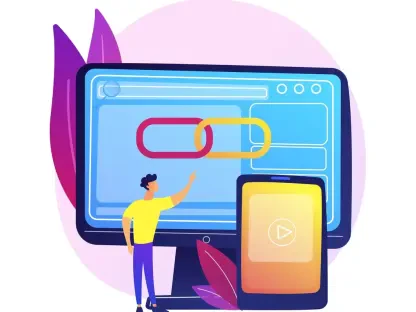Why Your LinkedIn Profile Matters for Winning Clients
Imagine scrolling through LinkedIn and stumbling upon countless profiles labeled simply as “coach,” each blending into the next with little to distinguish one from another. With over 4.7 million profiles tied to coaching on the platform, the competition is incredibly intense, and for coaches aiming to attract high-value clients, standing out in this crowded digital space is not just an option—it’s a necessity. A generic presence risks being overlooked amidst the noise of similar offerings.
The significance of a well-crafted LinkedIn profile cannot be overstated. It serves as the first point of contact for potential clients, often determining whether they reach out or move on to the next profile. A strategic approach can transform this virtual space into a powerful tool for building trust and credibility.
This guide delves into key areas that can elevate a coach’s LinkedIn presence. From crafting compelling content to leveraging visual elements and optimizing for conversions, these best practices aim to help coaches capture attention and turn profile visits into meaningful client connections.
The Power of a Client-Focused LinkedIn Profile
A generic LinkedIn profile often fails to make an impact, leaving visitors unclear about what specific value a coach brings to the table. Without a clear focus, such profiles miss the chance to resonate with the right audience, resulting in lost opportunities for engagement and connection. Potential clients scroll past, unable to see how their unique challenges can be addressed.
In contrast, a strategically designed profile offers substantial benefits. It boosts visibility among the target audience, encourages higher engagement through relevant content, and ultimately leads to more booked discovery calls. When tailored to speak directly to ideal clients, the profile becomes a magnet for those seeking specific solutions.
Positioning as a go-to expert in a niche is another critical advantage of a polished LinkedIn presence. By clearly articulating expertise and showcasing results, coaches can establish authority, making it easier for potential clients to trust their ability to deliver transformative outcomes. This focused approach sets the foundation for long-term success on the platform.
Key Strategies to Transform Your LinkedIn Profile
Optimizing a LinkedIn profile for client attraction requires intentional effort across every section. Each element, from headline to contact options, should work cohesively to draw in the right audience and prompt action. These actionable steps provide a roadmap for creating a profile that stands out and converts.
Practical implementation is key to seeing real-world impact. By following specific guidance and applying examples tailored to coaching scenarios, it’s possible to craft a presence that not only reflects expertise but also drives meaningful results. The strategies below break down how to achieve this transformation.
Craft a Headline That Captures Your Ideal Client
A headline on LinkedIn must go beyond vague labels to instantly connect with the intended audience. Specificity is crucial—potential clients need to know exactly who is being helped and what transformation is offered. A generic title fails to spark interest or convey unique value in a sea of similar profiles.
Using a formula like “I help [specific person] achieve [specific outcome]” can create immediate resonance. This structure cuts through ambiguity, ensuring the headline speaks directly to the pain points or aspirations of the target client. Avoiding broad terms and focusing on tangible results helps in making a memorable first impression.
Clarity in transformation is vital for impact. Instead of settling for a title that could apply to countless others, honing in on a precise promise ensures that the right people stop and take notice. This targeted approach can significantly increase the likelihood of profile visitors reaching out.
Real-World Example: Headline Transformation
Consider the difference between a headline stating simply “Business Coach” and one that reads “I turn overwhelmed agency owners into confident CEOs with systems that scale.” The former offers no insight into expertise or audience, blending into the background of countless similar titles.
The latter, however, directly addresses a specific group and their desired outcome, making it clear what problem is solved. Such a focused headline can triple discovery calls by resonating with agency owners who feel seen and understood, prompting them to explore further without hesitation.
Create a Banner Image That Sells Your Value
The default LinkedIn banner is a missed opportunity to showcase expertise and grab attention. Replacing it with a custom visual that communicates value—such as a client testimonial, a core offer, or evidence of transformation—can set a profile apart from the outset. A generic or uninspired image fails to capitalize on this prime visual space.
This banner acts as the first impression for visitors, often scanned before any text is read. Designing it to highlight a key achievement or promise ensures that within seconds, potential clients grasp the unique benefit of working with a particular coach. This immediate impact is critical in a fast-paced browsing environment.
Attention-grabbing visuals are essential for engagement. By embedding proof of results or a compelling offer in the banner, coaches can spark curiosity and encourage deeper exploration of the profile. This strategic use of imagery lays the groundwork for building interest and trust.
Case Study: Banner Impact
A coach once upgraded their banner to feature a powerful testimonial stating, “Emma helped me double my speaking fees in 90 days.” This simple change led to a noticeable increase in profile engagement, as visitors were drawn to the tangible result displayed prominently at the top.
The visual proof acted as a hook, prompting many to scroll further and learn more about the services offered. Such a banner not only communicated credibility but also created an emotional connection with potential clients aspiring for similar success, driving them to take the next step.
Structure Your About Section as a Client Magnet
Many coaches fill the About section with personal stories or lengthy journeys, which often fail to engage potential clients. Instead of focusing on individual history, this section should zero in on the client’s pain points and the solutions provided. A self-centered narrative risks losing the attention of those seeking help.
Adopting a sales-page structure can turn this space into a powerful tool. Start by addressing the client’s frustrations, demonstrate an understanding of their challenges, list specific outcomes achieved, include social proof, and conclude with a clear call to action. Linking a lead magnet for immediate value further enhances appeal.
This client-focused approach ensures relevance and impact. By speaking directly to the needs and desires of the target audience, the About section becomes a persuasive pitch that guides visitors toward booking a call or exploring further offerings, rather than merely recounting past experiences.
Example: About Section Makeover
Initially, a coach’s About section was a long-winded personal story that failed to connect with readers, resulting in minimal engagement. After a revision, it transformed into a concise, client-centric pitch starting with common struggles, followed by proven outcomes in bullet points, and ending with a direct “Book a Call” link.
This makeover shifted the focus entirely to the visitor’s needs, making the content relatable and actionable. The result was a significant uptick in inquiries, as potential clients could quickly see the value offered and felt compelled to reach out for a conversation.
Maximize Your Featured Section for Conversions
The Featured section on LinkedIn is a virtual shop window that should not be left empty or underutilized. It offers a prime opportunity to showcase high-value content that demonstrates expertise, such as lead magnets, case studies, or signature frameworks. Neglecting this space means missing out on a key chance to impress engaged visitors.
Pinning content that highlights proven results or unique methodologies can drive action. This section should be curated to provide immediate value while subtly guiding visitors toward deeper engagement, whether through downloading a resource or exploring a success story.
Avoiding clutter or irrelevant posts in this area ensures clarity of purpose. By focusing on materials that directly relate to client needs, coaches can position themselves as authoritative figures ready to solve specific problems, making it hard for visitors to leave without taking a step forward.
Success Story: Featured Content Results
One coach pinned a PDF titled “The 5-Step Framework I Used to Help 50 Coaches Hit 10K Months” in their Featured section. This targeted content led to a sharp increase in downloads, with many visitors subsequently reaching out for more information or to schedule a consultation.
The strategic use of this space turned passive viewers into active leads by offering something of immediate value. It demonstrated not only expertise but also a clear path to results, encouraging potential clients to move closer to a working relationship without hesitation.
Simplify Contacting You to Close More Deals
The default contact button on LinkedIn can be difficult to locate, especially for mobile users, creating unnecessary barriers for interested clients. Many potential leads may abandon their intent if reaching out requires too much effort or navigation through multiple clicks.
To address this, adding a direct booking link or application form in both the About and Featured sections removes friction. This ensures that anyone inspired to connect can do so instantly, capturing their interest at the peak of motivation before it fades.
Streamlining access is a game-changer for conversions. By prioritizing ease of contact, coaches can transform fleeting moments of curiosity into actionable conversations, ensuring that no opportunity slips through due to logistical hurdles.
Practical Impact: Easy Contact Access
A coach implemented a direct booking link within their About section, making it effortless for visitors to schedule a call. Within just one month, this small adjustment led to a doubling of booked consultations, as the barrier to connection was effectively eliminated.
This change highlighted how reducing obstacles can turn casual profile visits into tangible outcomes. Visitors no longer had to search for ways to engage, resulting in more frequent and meaningful interactions that paved the way for client relationships.
Final Thoughts: Turn Your Profile Into a 24/7 Client-Winning Tool
Reflecting on the journey of optimizing a LinkedIn profile, it became evident that every element had to serve a purpose in converting visitors into clients. Coaches who tested and refined their headlines, banners, and content discovered a steady rise in inquiries, proving that persistence in tweaking paid off.
The actionable next step was to treat the profile as a dynamic asset, continuously updating it to reflect evolving client needs and market trends. This adaptability ensured that the profile remained relevant and effective in attracting the right audience over time.
Looking ahead, the focus shifted to integrating analytics to measure engagement and refine strategies further. By committing to ongoing improvement, coaches positioned themselves to not only stand out in a crowded market but also to build sustainable pipelines of ideal clients through a platform that worked tirelessly on their behalf.









